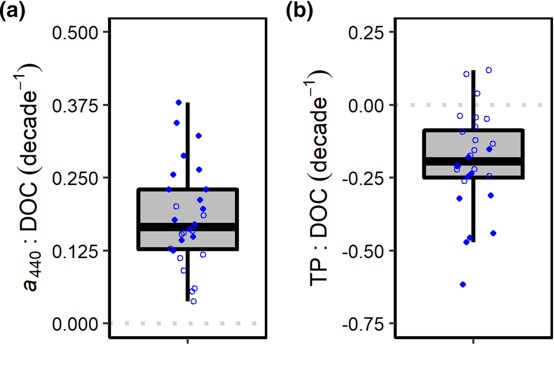
Authors
Jonathan T. Stetler, Lesley B. Knoll, Charles T. Driscoll, Kevin C. Rose
Widespread long-term increases in dissolved organic carbon (DOC) concentrations (i.e., “browning”) have been observed in many lakes, but the ecological consequences are poorly understood. Some studies suggest a unimodal relationship between DOC and primary productivity, with peak productivity at intermediate DOC concentrations. This peak is hypothesized to result from the tradeoff between light absorbing properties of DOC, and increases in limiting nutrients with browning. Nevertheless, it is unclear whether nutrient stoichiometry is constant as lakes brown. Across both regional and national surveys, we found a positive linear relationship between DOC and both total and organic forms of nitrogen and phosphorus. However, long-term data from a suite of browning lakes indicates that total nutrients do not increase as DOC increases through time. Our results show that DOC and limiting nutrients are coupled spatially, but not temporally, and that this temporal mismatch challenges previous conceptualizations of the long-term effects of browning on productivity.
